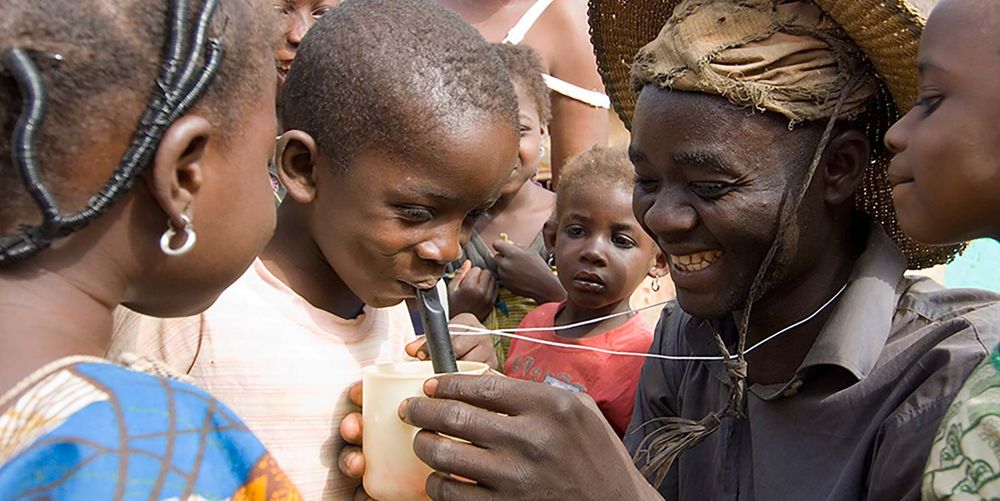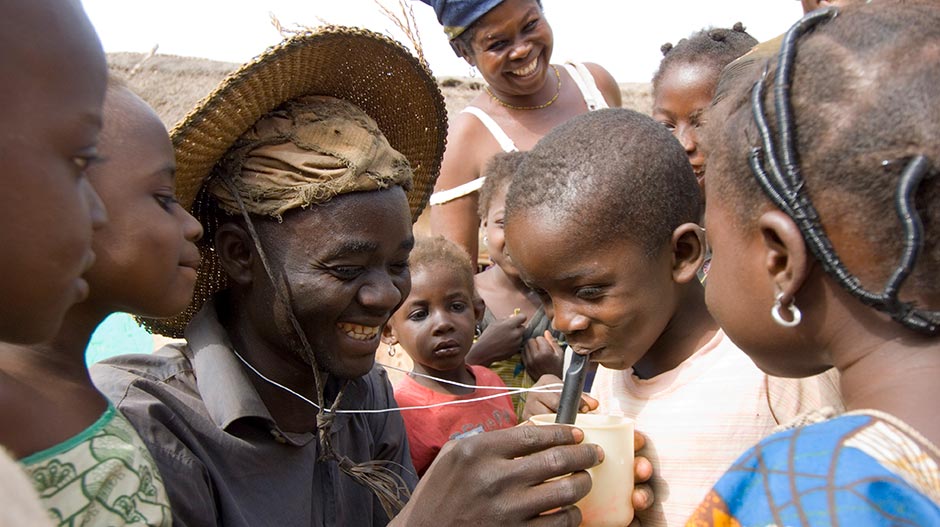Alwaleed Philanthropies "Global" Supports the Carter Center for Global Alliance’s Journey Towards Eradicating the Guinea Worm Disease

Highlights
Duration
2020 - 2024
Beneficiaries
+100,000,000 people
Targeting Range
Angola, Chad, Ethiopia, Mali, South Sudan, Cameroon, Central African Republic
In partnership with
Guinea worm disease, or dracunculiasis, is a parasitic infection caused by the Dracunculus medinensis worm. The parasite grows inside the human body and can reach several feet in length, causing intense pain, swelling, and fever as it exits through the skin.
The disease is transmitted through drinking water contaminated with tiny water fleas that carry the parasite. Once scientists identified this transmission route, global efforts focused on providing clean water sources, installing water filters, and educating communities—leading to a dramatic reduction in reported cases.
Guinea worm disease is on track to become only the second human disease in history to be eradicated after smallpox—and notably, the first parasitic disease to be eradicated and the first eradicated without a vaccine or medicine.
How Did the Journey Begin?
The global campaign to eliminate Guinea worm disease began in 1986, led by The Carter Center. Alwaleed Philanthropies "Global" joined the mission by supporting community-based interventions that promote health awareness and disease monitoring. The partnership aimed to reach and benefit individuals across high-risk regions.
About the Program
The Guinea Worm Eradication Program (GWEP) has been actively implemented in five African countries: Angola, Chad, Ethiopia, Mali, and South Sudan. The program focuses on four pillars:
- Surveillance
- Containment
- Reporting
- Targeted Interventions

Final Achievements in 2024
As the program concludes, the latest data demonstrates extraordinary impact:
- Only 12 cases were reported globally, across three countries:
- Chad: 7 cases
- South Sudan: 4 cases
- Central African Republic (CAR): 1 case
- Surveillance: Maintained in 7,969 villages
- Rumor Investigations: 749,170 reports received and 99% investigated within 24 hours
- Resulting in 12 confirmed human cases and 556 confirmed animal cases
- Awareness & Incentives:
- 16,984 community members surveyed were aware of cash rewards for reporting confirmed human or animal cases
- Interventions: 100% of villages with reported cases were treated with Abate® larvicide
- Impact Since 1986:
- Over 100 million cases prevented
- Human cases reduced from 3.5 million across 20 countries in 1986 to just 12 in 2024
- Total Reach in 2024: More than 10 million people received assistance

The near-eradication of Guinea worm disease is a monumental public health success. What makes this achievement unique is that it was realized without vaccines or pharmaceutical treatments, relying solely on community engagement, education, surveillance, and environmental intervention.
With continued global support, Guinea worm disease may soon be consigned to history—marking a major step toward a world free from preventable suffering and inequality.
Success Stories
Ethiopian commercial Farms Eliminate Tropical Diseases

Farmers in the Gambella Region of Ethiopia are suffering greatly due to the spread of Guinea worm disease and river blindness, which has been killing people for some time, as a result of the lack of clean drinking water, and the contamination in the pools of the Gambella Region.
While the Carter Center and the Ethiopian Federal Ministry of Health have been working for decades to eliminate guinea worm disease, river blindness and lymphatic filariasis among agricultural workers by spreading awareness, modifying behavior, and providing the necessary medication.
Despite the contamination of most of the water sources in Gambella, there was a farm that was not affected by the disease called (Saif Commercial Farm, where water is pumped from this hole dug by humans and transported by truck to irrigation stations for workers in the fields.
There the water is filtered with the aim of removing water fleas that may carry larvae guinea worm. Then the workers are also provided with personal pipe filters that farmers carry on their shoulders.
But Maul's farm was so badly infested that the owner of Maul's farm asked Adhom to let him work with a team to prevent guinea worm, as there are eighty-one holes and irrigation ponds of various sizes on the large farm and a large stagnant water canal nearby.
These water sources are perfect breeding grounds for Guinea worm disease, and there are more than thirty other ponds in hard-to-reach forest areas.
Adhom took it upon himself to clean the ponds of guinea worm larvae, and established a group (twenty-six of them work during the rainy season and ten during the dry season) and began treating all these water sources with calculated amounts of one of the chemicals donated by BASF, a chemical that kills guinea worm larvae.
Adhom has also developed and maintained an organized periodical calendar to ensure that each water source is treated every 28 days.
Of course, the task of the team was very difficult and dangerous, as the canal is teeming with crocodiles, the forests are crammed with snakes, and the lions are wandering in the camp. “It is a very hard work but I will stick to it until the end,” Adhom said.
Although he was working as a volunteer against Guinea worm in his village, he agreed to go to the farm to do the job. "But I am here and I will stay until they call me back to the village," he said.
Thus, Adhom set the most wonderful examples of volunteer work, and wrote an inspiring success story for all young people in Ethiopia, which shows strong will and hard work for the community health and their safety.






